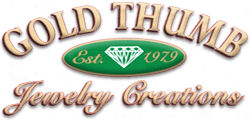Diamonds 101: Introduction to Carat Weight
No matter what anyone says, size does matter, at least when it comes to diamonds! While there are various factors that influence your diamond buying choices, size (which translates into weight) is often at the forefront. So how does size factor into the diamond you’re buying, and how important is it?
First, let’s talk about what the weight of your diamond actually means. The word carat comes from the carob seed; these were used by gem traders as counterweights in their balance scales to measure diamonds. Now, carat is a universal term for gem weight that is equal to .2 grams (about the weight of a paperclip). Just remember, carat is different than karat, which is a measure of gold purity (think 22k gold).
Carats are divided into 100 points. A “50 point” diamond weights .50 carats. The weight of a diamond is measured to the hundred thousandths of a carat, and then rounded to a hundreth of a carat. Unlike what you might normally know about rounding, though, the number is only rounded up if the third decimal is a 9. So, for example, both .995ct and .998ct diamonds will still be marketed as .99ct diamonds. Only a .999ct diamond will be rounded up to 1ct.
Be careful of the details of carat weight. If you’re looking at a completed piece of jewelry with a mounted diamond, you will likely be looking at an appraisal weight, which will actually be an estimate. These estimates have a margin of error of about 5%. You also should notice if the ring you’re looking at is similar to a halo style, one with a primary diamond in the center surrounding by smaller diamonds, as these could be marketed with a “total weight.” This is indicated with the abbreviation of “ctw,” so a 1 carat total weight ring would be shown as 1ctw. What you should know about these is that this is, like it sounds, a total number of all of the stones in the ring. So, while you may think that big gem in the center is 1 carat, in reality it could be a .8ct stone surrounded by .2ct of smaller stones.
Details like this matter, because once you know what a carat really is, you’ll learn about the value it brings to a diamond. As we mentioned at the beginning, size matters! Most people have these “magic numbers” in their heads for the weight of a diamond they want. Because of this, prices for diamonds jump at certain weights (.5ct, .75ct, 1ct). A great strategy for economical diamond-buying is to try to hunt down a stone that is just under one of these weights; you’ll save a lot of money if you opt for a .97ct diamond instead of a 1ct!
Nervous about how that would influence the beauty of your rock? Luckily, size does not equal weight. The diameter of a diamond can be larger on a lighter stone due to the cut. This is something you absolutely need to remember while diamond shopping; carat weight is important, but it’s only one of the Four C’s that influence the value and appearance of your diamond!
Always take a holistic approach to diamond shopping. Considering many factors will help you get the best diamond for your needs and your price point. Ready to start the adventure of picking out the perfect stone? Contact the professionals at Gold Thumb Jewelry; we are excited to help you begin!

